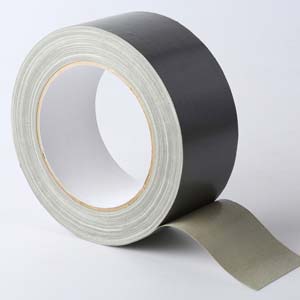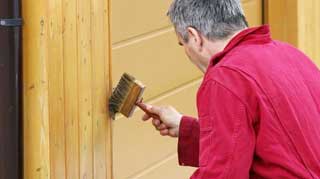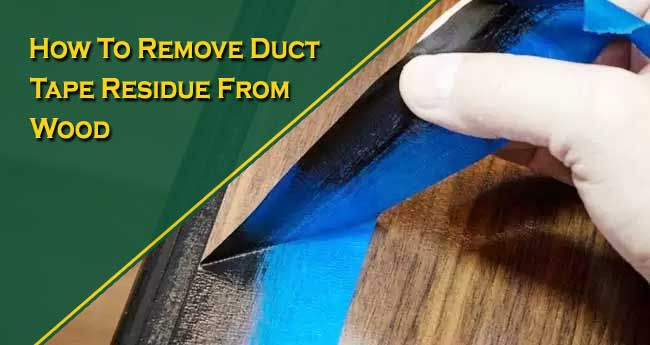Are you looking for the best solutions to know how to remove duct tape residue from wood?
Have you tried all the effective remedies for treating stubborn residue on your wood and still there are no results! Maybe you are making some mistakes and are not applying your technique properly.
It is always a very difficult challenge to remove this residue of duct tape because it contains a lot of stickiness and adhesives. You might be having so many questions like what are duct tapes made up of? And why did this happen to my wood?
It probably happened because of using a wrong duct tape that wasn’t intended for your material or you used wrong cleansing chemicals.
You should be also aware of what duct tape is made up of! Duct tape consists of three layers containing polythene, fabric, and then a rubber based- glue.
We will discuss every method to remove duct tape residue from wood and how you can avoid it in the future.
Why do You Need to Remove Duct Tape Residue From Wood?
Maybe you are struggling for too long to just remove that residue from wood but that stubborn and sticky residue is not coming off. You might be wondering if it’s okay to leave that residue as it is, and just cover it with some paint or hide it. Do not even think of it!
Leaving tape residue on the wood surface will completely damage it. First of all, it is too bad for your wood appearance. That sticky thing on your wood surface will attach any kind of dust particles on it, even hair and threads. This will not only look ugly but will be a cause of an unclean environment.
If you leave your tape residue untreated, it will affect your wood paint. Being there for so long will discolor your wood and will be a reason for your future trouble. If you are still planning to not remove that residue, that traces after being there for a long period will never be removable again.
It is a big possibility that shortly, you will have to invest big money in replacing your damaged wood material. It doesn’t matter how much effort is required to take off the duct tape residue, always do your job completely and don’t leave a single mark behind.
We will suggest you try all these effective methods while trying to clean all traces from your wood.
Different Ways to Remove Duct Tape Residue from Wood
These items are used in the below techniques:
- Dish-washing liquid and warm water
- Alcohol
- Cooking Oil
- Nail paint or an Acetone
- Peanut butter or any mayonnaise
- Vinegar and Vaseline
Always remember to have a soft piece of cloth and a gentle towel while working on it.
1. Putty knife

Always try to scrap the left residue with a putty knife or you can use a dull blade. Hold your knife completely flat against your wood surface and then start removing residue by sliding over it. You have to be a little patient while doing it because it will not easily remove the residue and you have to do it very slowly and gently.
If your wood paint can be scratched even by these small blades and butter knives, skip this method.
2. Vinegar Solution
Use of vinegar solution. In a bowl mix 2 cups of vinegar and water. Dilute this solution to get a 30% liquid that means in 70ml of water and 30ml of vinegar. The towel ought to be saturated enough that it ought to be dripping a small amount.
Apply the towel on the wood. check that that you just place the maximum amount of the vinegar on all the areas wherever glue is present. The glue ought to be fully in contact with the vinegar solution.
Keep pressing the vinegar solution to the glue till it’s utterly soaked the adhesive.
Most of the time, it’ll take a minimum of 2 applications of vinegar to utterly take away the glue. If not, you’ll get to keep repetition the method with the towel and vinegar solution till the glue has been utterly removed.
3. Alcohol to the Rescue
It would be wise to use a little alcohol for those adhesives that are sensitive to pressure. The type of alcohol to use can be a non-solvent.
After it has been applied, the adhesive could quickly lose its adhesion. So, Now use a putty knife or scrapper to off residue from your wooden surface.
Please note that alcohol can affect freshly painted surfaces!
4. Hair Dryer

Heat treatment is an effective remedy against any hard residue. You can apply heat on the surface by using a hairdryer. Heat softens the residue as it breaks the bonding of residue to your wood surface.
But you have to be very careful while applying heat as more heat will not be only hardening your residue but will also damage your wood.
This method requires a bit more effort but it is the best one if your residue has become more adhesive. The good thing is it doesn’t involve any liquid and will not cause discoloration. Use a hairdryer from a distance to apply heat. Also, throw hot air blasts while setting it on its highest range for a few seconds.
5. Dishwashing Liquid
It is very effective for cleaning residue from your wood surface. First, clean all the infected areas with warm water to remove any dust particles for better results.
Take one tablespoon of liquid detergent and mix it in a mug of warm water. Now take the soft cloth. Dip it into that mixture and keep scrubbing the surface.
When your surface becomes smooth and all residue is cleaned off, clean that area with a paper towel.
6. Cooking oil
You can also use cooking oil easily available at your home to remove that stubborn sticky residue. You just have to pour it onto the surface and cover it with a paper towel.
After a few minutes, lift the towel. Your surface should feel smoother now. If this didn’t work for you, you can also try scrubbing it.
There are some alternatives if cooking oil is not available.
- Peanut Butter
- Mayonnaise
- Baby Oil
7. WD-40
Take a piece of cloth and dip a small part of it into WD-40. Apply it on your wood surface having duct tape residue. Keep scrubbing the residue until it starts to come off.
After you have completely removed all the traces of your duct tape residue, clean your surface with water and make sure that no chemicals are left behind.
Make sure that your wood is not vulnerable to oil in WD-40 and test it before applying.
8. Vaseline Usage
Vaseline is very effective and can be used as an alternative for WD-40. Rub it on the surface and wait for it to reduce the stickiness of residue. After that clean your surface. If you like, you can also use a car wax!
How to Prevent Tape Residue?
The residue of duct tape is because of its reaction to adhesive chemicals and bonding with the wood surface. This is the reason it is possible to use duct tape without worrying about adhesive marks that your duct tape will leave behind. Always know about the strength and the material of your duct tape you are using!

Keep in mind that if you are using a duct tape that has double strength as compared to normal duct tape, it is not possible to remove it without any marks left behind on your wood. Other than that, your environment factors also indicate whether your duct tape will leave traces or not. Let’s take an example!
Suppose you have applied your duct tape considering its strength and material to avoid any residue and are confident that your tape will easily come out without leaving any residue on the surface!
But your tape is exposed to excessive heat causing it to react negatively with the adhesiveness of tape and its bonding with the wood surface. This will cause you trouble with tape marks on your wood.
Now – you might be wondering if that’s the case, is it possible to completely prevent residue while removing a tape? Truth is there are some precautions that you can take to minimize residue and can avoid a big mess. But it will always leave some marks behind.
The following are some of the guidelines that you can follow for minimizing residue traces.
1. Follow the Instructions
Never use a random duct tape that you don’t know about! Always read the description while buying a duct tape to find if it meets your expectations or not. It will aid you in selecting the right one. Be familiar with the strength of the duct tape, as it is the main reason behind any massive residue.
Before applying, read all the guidelines and follow them properly!
2. Expert Advice
It is recommended to consult with duct tape experts to have a better understanding before applying. They will clear all your queries about which duct tape to choose. It will also help you to select the right one with perfect strength for your material and what are other precautions you can use to prevent residue at any cost.
As there are different types of duct tape in the market and all are manufactured following the particular requirements of the customers, you can always dig deep about which type of tape you should use. Or directly contact any duct tape manufacturer.
3. Earliest Possible
If you want to prevent hard adhesive residue, it might be in your best interest to remove any duct tape as early as possible. Don’t get lazy and take off that duct tape if you no longer need it. The longer you wait, the more difficult it will be to remove it.
Any climate factor can cause your duct tape to be stickier and will be left behind more traces. This can be due to heat, cold, and moisture.
The aging of your tape will also increase the risk of more traces of your material. Try to remove it at your first opportunity!
4. Quick Pull
It is suggested that you remove your duct tape as quickly as possible. It will require a little bit more effort but will save you from the trouble of hard residue traces. If you will slowly proceed, breaking that chemical bonding will be harder, and eventually, in the long run, you will be working harder and with more effort to remove all that mess.
Before removing it make sure that your tape hasn’t completely dried and is still tacky, as this tip is only useful for a duct tape that you have been using for a few days. If you will try to take the dried tape with a quick pull, it can damage your surface paint and will leave more marks. Below are some other tips to remember while using duct tapes.
- Before using a cleaning material to clean the left residue, always take a sample and test it. Because it can contain harmful chemicals that will damage your wood.
- Be able to provide a good air ventilation system if you are working with cleaning agents such as ammonia and other fluids.
- Rinse your wood surface carefully after removing duct tape residue. Remember that ammonia and chlorine bleach when put together can result in poisonous gas! Avoid this combination at any cost.
Do you need to repaint the wood after removing duct tape residue?

There are different ways of removing that residue off your woods. If you are troubled by a lot of residue on your wood. you should be worried about wood paint. Remove tape residue very gently to avoid any damage to the paint. The following are a few steps that you can do to avoid paint scratch.
- Instead of scratching it with a knife or fingers, first, try to make your residue soft by using warm water. Gently rub warm water with any soft cloth and in back and forth direction.
- Add a few drops of any dishwashing liquid that is available and wait for the residue to become less sticky.
- You can also use some heat to remove it but try to do it from a distance as more heat will just damage your paint. Use as little heat as warming it through a dryer and then rub it gently with a smooth cloth.
Safety Issue That You Should Take Care While Removing It
There are a lot of benefits regarding duct tapes but taking precautions while apply and removing is also necessary. If you are using common duct tape, be more careful because these tapes don’t contain any safety certificates like proposition 65 and can increase many risks.
For example, they can burn, and the result will be toxic smoke.
These smokes can be a very health hazard and can cause a digestion problem. These tapes don’t have good mechanical strength and it will affect its efficiency.
Duct tapes aren’t normally that dangerous if you are using a small quantity of it. Remember that if you ever inappropriately use duct tape, it will increase risks. Always put on gloves before removing it, as any left residue can contain bacteria. This bacterium will irritate your skin, cause dermatitis, and leave red marks on your hands.
Keep in mind that do not wear latex gloves as they are bad for adhesives in duct tapes and are not considered good resistors for many chemicals found in that tape residue. Always wash your hands with soap after you have removed duct tape.
If there are any chemicals left on your skin, any sanitizer because containing alcohol instead of removing these chemicals will drive it into your skin.
Try to keep your work away from any fireplace because some duct tapes are flammable. Burning of these duct tapes can generate very poisonous fumes.
Conclusion
If you will not take proper care while removing duct tape residue, it will ruin your wood paint. We recommend that you take off your duct tape as soon as possible to save your wood from paint damage. The older your tape is, there are more chances of paint damage. Always use a good quality duct tape and buy a duct tape according to your requirements.
Removing a duct tape residue is one of the hardest tasks. We hope that you have found your answer to how to remove duct tape residue from wood and these techniques will work for you but we cannot guarantee as it completely depends on how old your residue is and the persistence of it.
If none of the above methods works, first try to locate your errors if anything was wrong and discover the best strategy that will work for you. If still, results are not satisfactory, we suggest you ask for professional help and try to treat your wood as soon as possible before any permanent damage.
You can also check:
- Easy Way to Erase Liquid Chalk
- Simple Tricks to Select Wood Stain Remover
- DIY Tips to Get Rid off Acrylic from You Wood
- Effortless Way to Clean Oil Stains from Your Woods
- Trouble Free Steps to Take off Lacquer from Wood
- Beginner’s Guide for Wiping out Stain From your Wood Deck
- How to Remove Any Kind of Glue from Wood?
- 7 Steps to Clean Up Wood Mold

